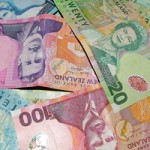The euro fell for a second day against the US dollar, following a speculation the European Central Bank may signal additional monetary stimulus next week, to bolster the economy.
EUR/USD touched a session low at 1.3790 at 08:50 GMT, after which the pair consolidated at 1.3801. losing 0.18% for the day. Support was likely to be received at March 25th low, 1.3749, while resistance was to be met at March 25th high, 1.3847.
Demand for the 18-nation common currency remained under pressure after yesterday the governor of the Bundesbank and member of the ECB Governing Council, Jens Weidmann commented that central bank policy makers haven’t ruled out introducing further stimulus to spur economic growth in the euro area.
Weidmann said yesterday the ECB bank may use negative interest rates to counter further appreciation of the 18-nation common currency and added that policy makers have not ruled out introducing new stimulus to fight against deflation. Stimulus programs tend to weaken a currency.
“If any downside risks to this scenario appear, we stand ready to take additional monetary policy measures that ensure our mandate is fulfilled,” European Central Bank President Mario Draghi said yesterday, cited by Bloomberg. ECB policy makers, who lowered the main interest rate to a record-low 0.25% in November, are set to reconvene on April 3rd.
Euros demand was also pressured after yesterday data showed a gauge of business sentiment in Germany, the euro area’s largest economy, fell this month.
The index of business climate in Germany dropped to 110.7 in March from 111.3 a month ago, the strongest since July 2011, the German research institute, Ifo reported yesterday. Analysts predicted a smaller decline to 110.9. The index is based on a survey, encompassing almost 7 000 companies operating in manufacturing, construction, retail and wholesale trade.
Meanwhile, durable goods orders in the United States probably increased 1.0% in February, according to preliminary estimates, as a month ago orders declined 1.0%. Durable goods category includes new and second hand goods, which are usually used for a period of over three years. It includes motor vehicles, housing furniture, sports goods, construction materials, industrial equipment, metals and minerals and others.
This indicator accounts for a major part of nation’s factory orders. A larger rate of increase than projected would certainly provide a boost to US dollar’s demand.
Durable goods orders, which exclude the sector of transportation, probably climbed 0.1% last month, following a 1.1% increase in January.
Durable goods orders, which exclude expenditures in the sector of defense, probably rose 2.5% in February, after a 1.8% drop in January. The official results are due out at 12:30 GMT.
Elsewhere, EUR/SEK touched a daily high at 8.9036 at 09:24 GMT, after which consolidation followed at 8.8996, adding 0.54% for the day. Support was likely to be received at March 25th low, 8.8464, while resistance was to be met at February 28th high, 8.9389.





